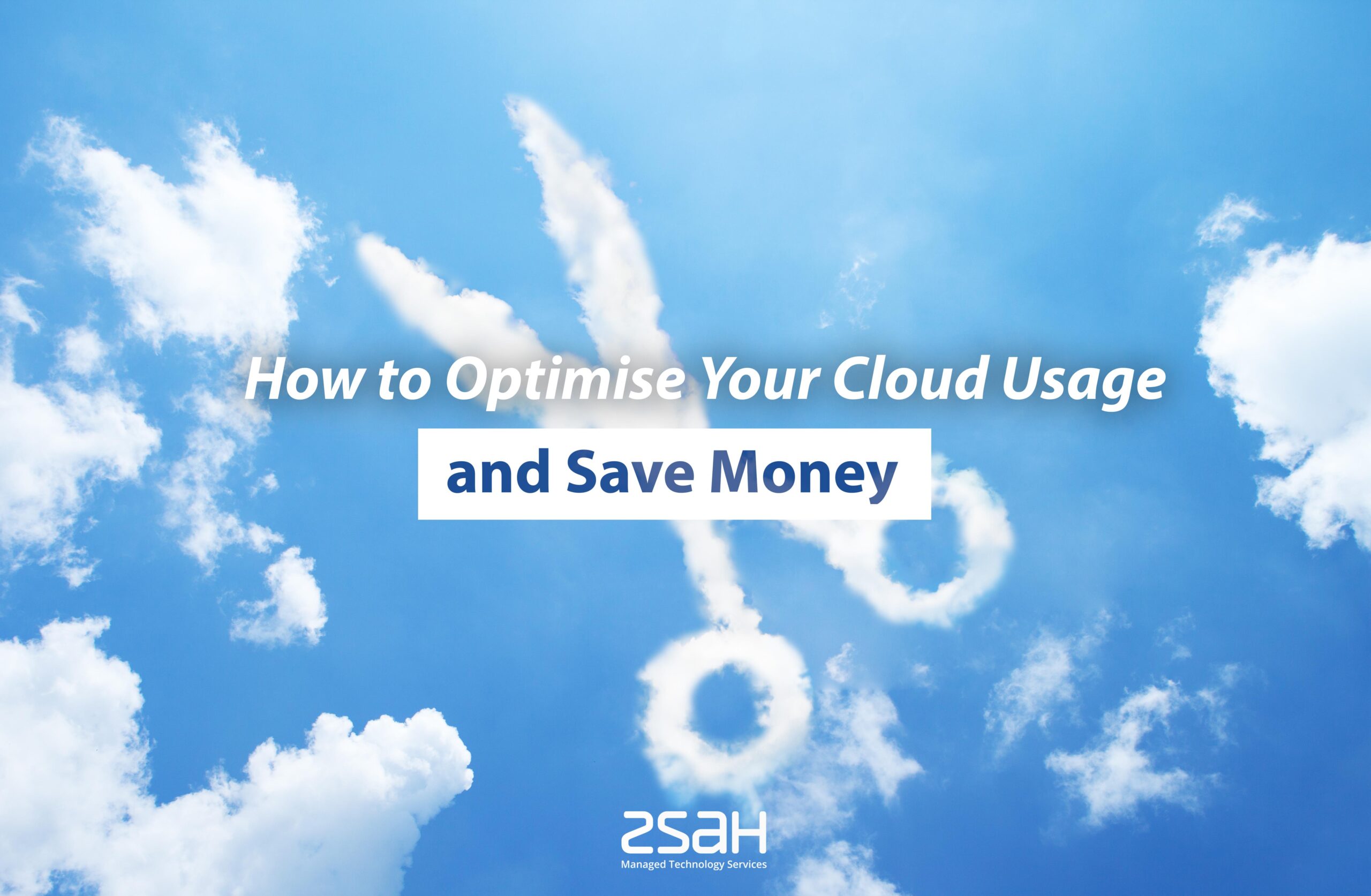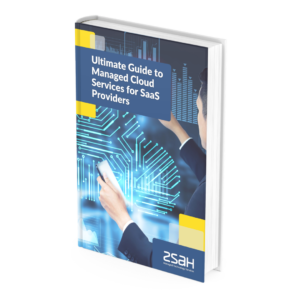How to Optimise Your Cloud Usage and Save Money

Are you looking for ways to optimise your cloud usage and save money?
In today's economy, the costs of doing business are on everyone's mind, and many enterprises are finding they have to cut back and micro-manage their resources. The cloud is an essential business resource in the modern enterprise – and it certainly isn't something that can be simply turned off to save a bit of money. As such, it's essential to have a solid strategy in place to optimise your cloud usage and control your costs.
"We expect public cloud prices in Europe to increase at least 30% in 2023, causing an almighty shock to many [cloud] customers who are also trying to get their costs down and leading to a lot of tension and a lot of aggravation between you and them and providers." – Steve Brazier, CEO, Canalys.
Source: The Register
Controlling Cloud Costs – Choosing the Right Provider
At zsah, we understand that reassurance isn't enough. It's not enough to simply say that your costs will be controlled if you work with us or move to the cloud.
What matters first and foremost is choosing the right cloud provider for your unique business requirements.
Different providers have different pricing models, capabilities, and features – so selecting the right one can make a big difference to your cloud costs.
That’s why at zsah, we work with you to understand your precise needs and budget so we can use our experience and expertise to find the provider that's the perfect fit for you.
We equip you with the tools and skills to track and monitor your resource usage and identify areas where this usage can be reduced or optimised. We then take meaningful action to minimise your consumption and thereby reduce costs.
In addition, we advise you on other cost-saving techniques like changing or fine-tuning your subscription services, reviewing reserved instances, using spot instances, choosing regions wisely, and staying within your resource limits – all of which we explain below.
So, without further ado, here are our top tips to help reduce your cloud costs.
1) Subscription Service Changes
Changing your subscription services is often a great way to save money.
If you're already paying for something, it's easy to forget that there's an opportunity cost involved in keeping that service around – the fact is you could be putting that money towards something else in your business that may be even more valuable than what the subscription fee provides.
For example, let’s say you’ve invested in a sophisticated email marketing platform which costs £100 a month. With all its nifty features, it seemed like a good investment when you first signed up – but, upon review, you realise you’re only actually using 10% of those features. In other words, the email marketing platform is too fancy for your needs – meaning you could potentially save a lot of money by switching to a cheaper platform without all the features you don’t use anyway.
Now, you can divert those savings towards something else your business really could make use of – and potentially open up new opportunities for adding real value that a needlessly fancy email platform was preventing.
Of course, this is just one example – the task is to review all of your subscription services, cut out the fat, and invest elsewhere.
2) Reviewing Reserved Instances
Reserved instances are an excellent strategy for cost optimisation in cloud computing.
In essence, reserved instances are pre-purchased cloud computing resources with discounted rates, allowing businesses to save costs by committing to a specific usage level and duration in advance.
Reserved instances are highly cost-effective for workloads that have predictable and sustained usage patterns. This is because they provide stability and budget predictability, allowing businesses to allocate their cloud resources more efficiently. In addition, reserved instances are advantageous for long-term projects or workloads with steady demand, as they enable businesses to optimise their cloud costs while maintaining performance and scalability.
So – how do you know if using reserved instances is right for your business?
Reviewing your current usage will help determine whether it makes sense to purchase additional capacity through reservations instead of paying hourly rates. In addition to reviewing usage patterns and trends across different types of cloud resources (storage vs CPU), look at historical data as well (such as last month's) when deciding whether or not now is a good time to buy additional capacity with reservations rather than pay higher hourly rates later when demand increases again.
3) Using Spot Instances
Spot instances are another great way to save on your cloud costs.
Instead of paying the full price for an instance, you can bid on unused capacity and get it at a lower price.
However, one thing to watch with spot instances is that even though they’re offered at a discount compared with regular instances, there's no guarantee your bid will be accepted – or if it will be fulfilled within a certain time frame.
Nonetheless, when managed well, you can use spot instances for both long- and short-term projects because they're available in multiple regions around the world, including US East (N. Virginia), US West (Oregon), Europe West (Ireland), Asia Pacific Southeast (Singapore), Asia Pacific Northeast (Japan).
The availability depends on where you want your application hosted, so check out our site map page for all available regions before deciding which one works best for you!
4) Choosing Regions Wisely
When choosing regions, you should consider the following.
- Budget
First – do you have a budget? If so, how much?
Depending on your organisation and its needs, this may be a key factor in determining which region(s) to use.
- Service Level Agreements (SLAs)
Does your workload require an SLA? If so, which one?
It's important to remember that cloud providers offer different types of SLAs depending on whether or not they provide dedicated hardware resources such as CPUs or memory directly attached via Fibre Channel networks.
Some providers will offer only network-based storage services with no guarantees about performance. Others might guarantee 99% uptime but only provide virtual machines instead of physical ones.
You should also consider whether there are specific security requirements related to encryption standards used by each company before making any final decisions about where exactly your data will reside within their infrastructure.
5) Staying within Current Resource Limits by Limiting Requested Resources
One of the most powerful ways to minimise cloud costs is to ensure that you're using the right size instance for each purpose. The same goes for memory and CPU, as well as storage and number of cores. The more resources are used, the more expensive they become.
Because containers use fewer resources than VMs – and can also be scaled up or down as needed – they should be considered whenever possible. However, it's also important not to go overboard with them. If a single container has too many tasks running inside it (and thus consuming too much RAM), then this will increase costs – sometimes significantly enough that it might make sense to launch another VM instead.
zsah – Helping You Optimise Your Cloud Costs
None of the cost optimisations we’ve outlined in this blog post are simple to implement. Indeed, cloud environments and services are constantly changing and evolving and, as such, need to be reviewed on a regular basis to ensure every penny is being spent wisely and profitably.
At zsah, we provide this service as part of the package with all of our managed cloud service offerings. Our dedicated consultants work constantly to ensure you’re getting the very best value from your cloud infrastructure every step of the way.
We're passionate about what we do, and we love helping businesses like yours save money on their cloud bills. And we're not afraid to show off our key credentials because we know we've got the expertise to back it up.
In conclusion, controlling your cloud costs is essential in today's economy. By choosing the right provider, monitoring your usage, optimising your resource consumption, and taking advantage of crucial cost-saving techniques, you can make the most of your cloud investment and achieve your business goals. And if you need any help along the way, we're here for you.
eBook - Guide to Managed Cloud Services for Saas Providers
All the knowhow to help you implement a successful managed Cloud Strategy.


